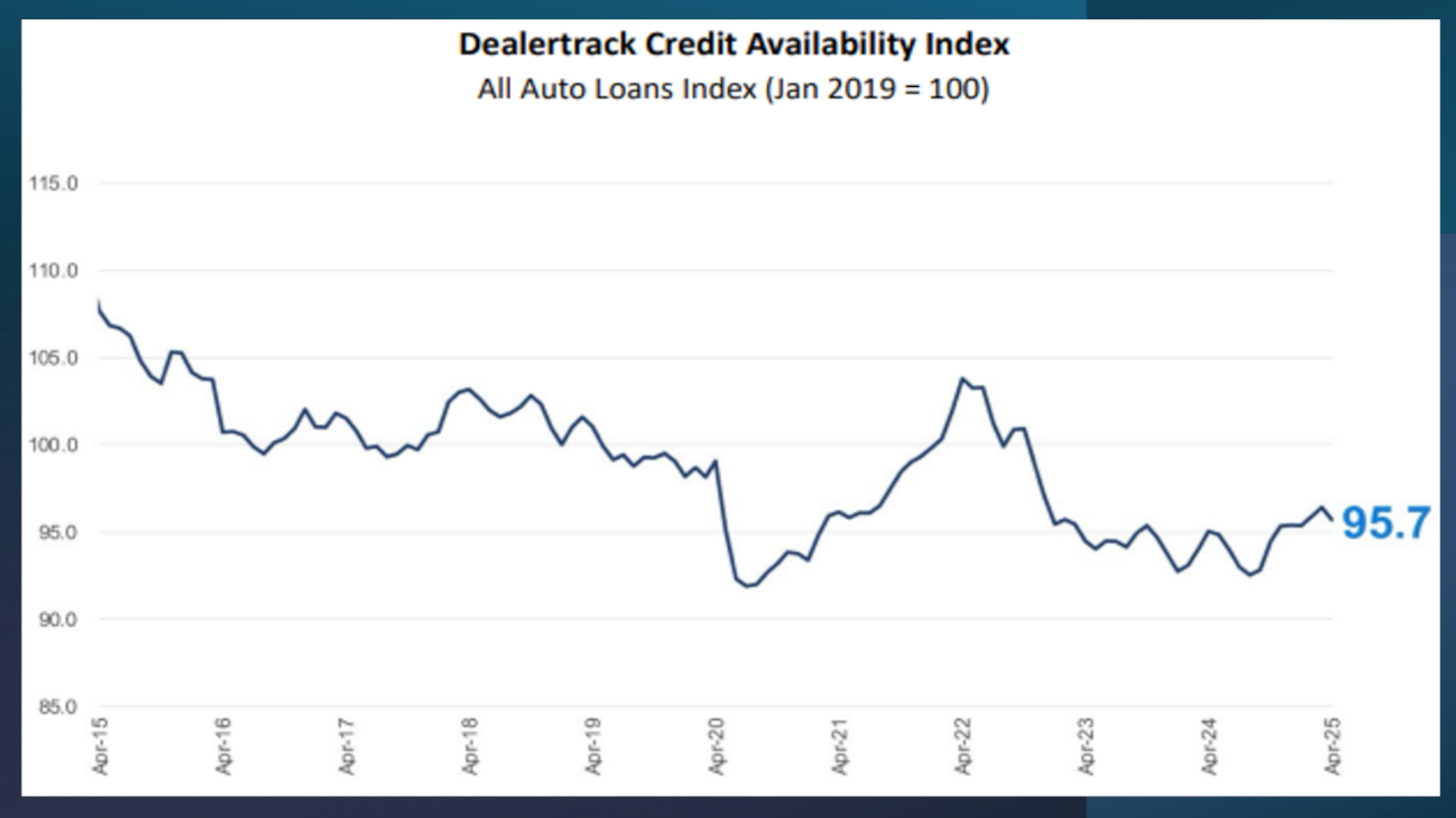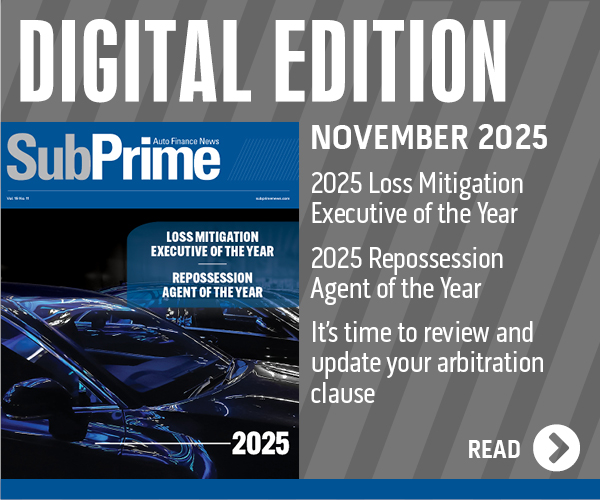Cox Automotive spots ‘notable changes in auto credit access’ in April

Chart courtesy of Cox Automotive.
By subscribing, you agree to receive communications from Auto Remarketing and our partners in accordance with our Privacy Policy. We may share your information with select partners and sponsors who may contact you about their products and services. You may unsubscribe at any time.
Auto financing — at least on the origination side of the business — doesn’t appear to be fully immune from the headwinds and uncertainty that seem to be influencing the economy.
Cox Automotive reported on Monday that the Dealertrack Credit Availability Index for April “revealed notable changes in auto credit access across various metrics.”
The index came in at 95.7 in April, down from 96.3 in March. Cox Automotive said that’s a month-over-month decrease of 0.7% and a year-over-year increase of 0.7%.
The Dealertrack Credit Availability Index tracks six factors that affect auto credit access: approval rates, subprime share, yield spreads, term length, negative equity and down payments. Reported monthly, the index indicates whether access to auto credit is improving or declining. This typically means that it is cheaper and easier for consumers to obtain a loan or more expensive and harder.
“For consumers, the access to auto credit did not improve in April, particularly for those with lower credit scores,” Jonathan Gregory, a senior manager on Cox Automotive’s economic and industry insights team, wrote in an analysis accompanying the latest index reading.
“The subprime share of loans decreased, indicating that lenders were more cautious about extending credit to higher-risk borrowers,” Gregory continued. “Additionally, the lower yield spreads mean that borrowing costs may be lower. Consumers should carefully consider the terms of their loans and their ability to manage monthly payments and overall debt.
Subscribe to Auto Remarketing to stay informed and stay ahead.
By subscribing, you agree to receive communications from Auto Remarketing and our partners in accordance with our Privacy Policy. We may share your information with select partners and sponsors who may contact you about their products and services. You may unsubscribe at any time.
“For lenders, the decreased subprime share and longer loan terms indicate a more cautious approach towards higher-risk borrowers,” he went on to say. “The lower yield spreads suggest that lenders are offering more favorable interest rates. Lenders will need to balance their risk appetite with prudent lending practices to ensure the stability of their loan portfolios.”
Gregory elaborated about how each of the six trends moved in April, beginning with approval rates.
Cox Automotive determined the approval rate for auto financing increased by 20 basis points in April.
“This increase indicates that more consumers were able to secure auto loans, reflecting a more favorable lending environment,” Gregory wrote. “Higher approval rates can be attributed to lenders’ confidence in the economic outlook and consumers’ ability to repay loans.
As Gregory referenced, the subprime share of loans, representing credit given to applicants with lower credit scores, decreased by 280 basis points in April.
“This suggests that lenders are slightly more cautious about extending credit to higher-risk borrowers compared to March,” Gregory wrote.
Cox Automotive computed that the yield spread decreased by 54 basis points compared to February. The contract rate was 11.49% in March and 11.12% in April. The five-year Treasury note stood at 4.04% in March and 3.91% in April.
“Lower yield spreads indicate lower costs for borrowers, which could be a response to the decreased subprime share. This trend suggests that while lenders are slightly more cautious, they are also offering more favorable interest rates,” Gregory wrote.
Turning next to contract terms, Cox Automotive discovered that the share of paper originated last month with terms greater than 72 months increased by 130 basis points.
“Longer loan terms can make monthly payments more affordable for consumers, but they also result in higher overall interest costs over the life of the loan. The increase in longer-term loans may indicate that consumers are seeking ways to manage their monthly expenses more conservatively,” Gregory wrote.
Another indicator of how consumers are doing, Cox Automotive found that the negative equity share, representing the proportion of borrowers who owe more on their loans than the value of their vehicles, increased by 10 basis points in April.
“This rise is an important indicator of financial stress among borrowers,” Gregory wrote. “Higher negative equity shares can lead to increased default rates, as borrowers may struggle to keep up with payments on loans that exceed the value of their assets.”
Finally, Cox Automotive pointed out the average down payment percentage remained stable in April compared to March, sitting at 14.7%.
“Higher down payments can reduce the loan amount and the risk for lenders, but they can also pose a challenge for consumers who may not have sufficient savings,” Gregory wrote.
A couple of other observations from Gregory included:
—Year-over-year, credit access loosened the most for non-captive new-vehicle sales and the least for independent used sales.
—Among lender types, credit unions showed the most significant loosening over the past year, while auto-focused finance companies loosened the least.


